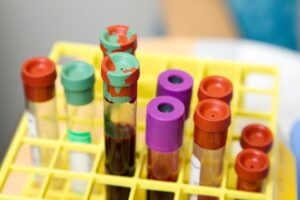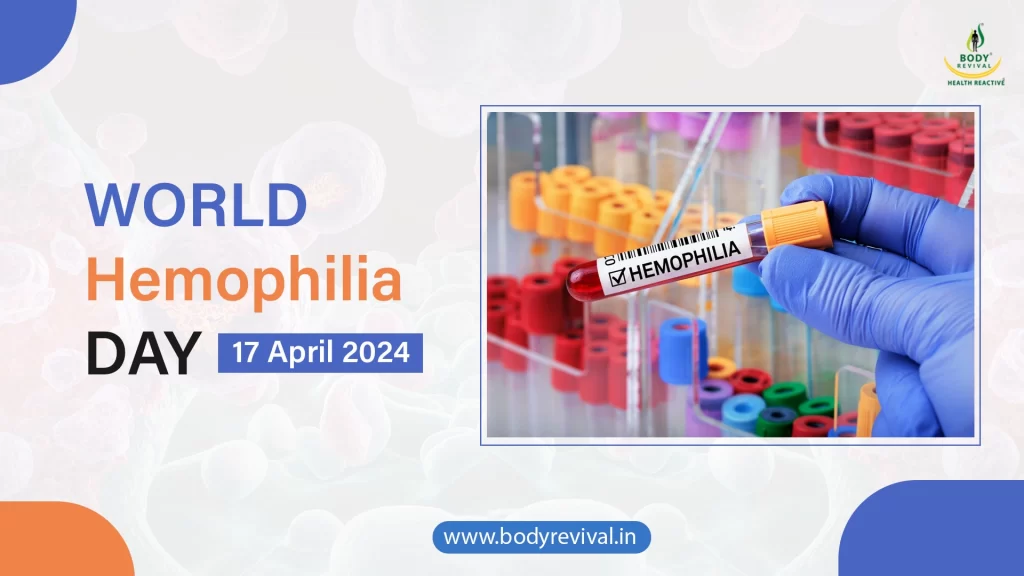Imagine scraping your knees while playing, or nicking your finger on a knife while cooking. For most of us, it’s just a minor annoyance. We might get a little frustrated because it stings, but we slap on a band-aid and move on with our day. But for some people, these seemingly harmless cuts can be a matter of life or death. That’s because they suffer from a rare condition called Hemophilia, which prevents their blood from clotting. Every time they bleed, their bodies struggle to stop it, putting them at risk of severe bleeding and other complications.
For these individuals, a simple cut can turn into a serious medical emergency. They have to be extra cautious with their daily activities, and constantly vigilant to avoid any potential injuries. Even a small bruise can be a cause for concern, as it could lead to internal bleeding that is hard to detect.
What is Hemophilia?
Hemophilia is a genetic disease usually passed from parents to children and is more common in males. It is caused by a deficiency in clotting factors carried by chromosomes, impairing the blood’s ability to clot, and resulting in bleeding.
Individuals with Hemophilia lack a specific clotting protein in their blood, which helps stop bleeding at an injury site by working with platelets. As a result, people with Hemophilia often bleed longer after an injury and are more vulnerable to internal bleeding. In severe cases, excessive bleeding can be fatal.
Hemophilia not only affects the physical health of those who have it but also takes an emotional toll. Imagine living with the constant fear of bleeding and the limitations it puts on your daily life. It can be incredibly frustrating and disheartening to have to avoid certain activities or be careful with every little bump or scratch.

What are the signs of Hemophilia?
Signs of possible bleeding disorders such as Hemophilia can manifest in various ways, including:
- Unusual bleeding after vaccinations
- Blood in the urine or stools
- Unexplained irritability in infants
- Experiencing too many large or deep bruises
- Pain, swelling, or tightness in the joints
- Unexplained, excessive bleeding from injuries or cuts after dental work or surgery
- Unexpected nosebleeds
In severe cases, bleeding can occur in the brain even with a minor bump, leading to serious complications. Symptoms in such cases may include:
- Lethargy
- Double vision
- Repeated vomiting
- Prolonged headaches
- Convulsions
- Seizures
- Sudden weakness
It’s important to be aware of these potential signs and seek medical attention promptly if you or someone you know exhibits any of these symptoms, especially if there is a known history of Hemophilia or other bleeding disorders.
Early detection and proper medical care can make a significant difference in managing and treating these conditions effectively.
Is Hemophilia always inherited?
Hemophilia can sometimes arise without being inherited and may be associated with various conditions, such as:
1. Cancer
2. Autoimmune disorders
3. Pregnancy
4. Drug reactions
5. Multiple sclerosis
How to identify who is affected?
Consider the following scenario explained by Dr. Deshpande regarding Hemophilia, which is a male predominant disorder due to the genetic makeup of individuals.
Males have XY sex chromosomes, while females have XX chromosomes.
Hemophilia is an X-linked disorder, meaning the genetic mutation responsible for this condition is located on the X chromosome. If a male is affected, it indicates that he inherited the genetic mutation from his mother, as his father can only contribute a Y chromosome. When an affected male with Hemophilia becomes a father, he will pass on the Y chromosome to his male offspring, which means they will not be affected by Hemophilia. However, he will pass on the faulty X chromosome to his female offspring, making them carriers of the disorder. This perpetuates the cycle of Hemophilia in subsequent generations.
Early signs and symptoms of Hemophilia are often observed when a male baby undergoes vaccination or immunization, as there is a high risk of hepatoma or intramuscular bleeding due to clotting factor deficiency.
Throughout their lives, individuals with Hemophilia are at high risk of bleeding to death if not treated promptly for any internal or external bleeding episodes. Early identification and proper medical care are crucial in managing and treating Hemophilia effectively to prevent life-threatening complications.
A ray of hope
However, despite the challenges they face, many individuals with Hemophilia are determined to live fulfilling lives. They advocate for awareness and support and strive to educate others about this condition that is often misunderstood.
So next time you get a cut or a scrape and simply brush it off, take a moment to think about those who struggle with Hemophilia.
It’s a reminder of the resilience and courage of those who face this condition every day, and a call to action to raise awareness and support for those in need. Because for them, a small cut is not just a nuisance, but a constant battle against a disorder that affects their very blood.

